Abstract
Cooling towers have been demonstrated to be amplifiers and disseminators of legionella, the causative organism of Legionnaires' disease. Community outbreaks associated with cooling towers have been reported with several common factors. Small towers (< 300 kW) have predominantly been implicated in outbreaks. Cooling tower-associated outbreaks are most frequent in autumn, and frequently implicated systems have been operated after a period of shutdown. This paper reports field study data relating system operation to legionella colonization of systems. Operating systems have been shown to be more frequently colonized by legionella than shutdown systems. In some cases operation of systems after periods of shutdown raised legionella concentrations from below detection limits to between 50 and 950 c.f.u./ml within 10 min. These data and previously reported data relating to biofilm and sediment colonization of the systems, and community outbreaks of Legionnaires' disease, have been used to develop a model explaining the seasonal nature of outbreaks associated with irregularly operated, small cooling tower systems.
Full text
PDF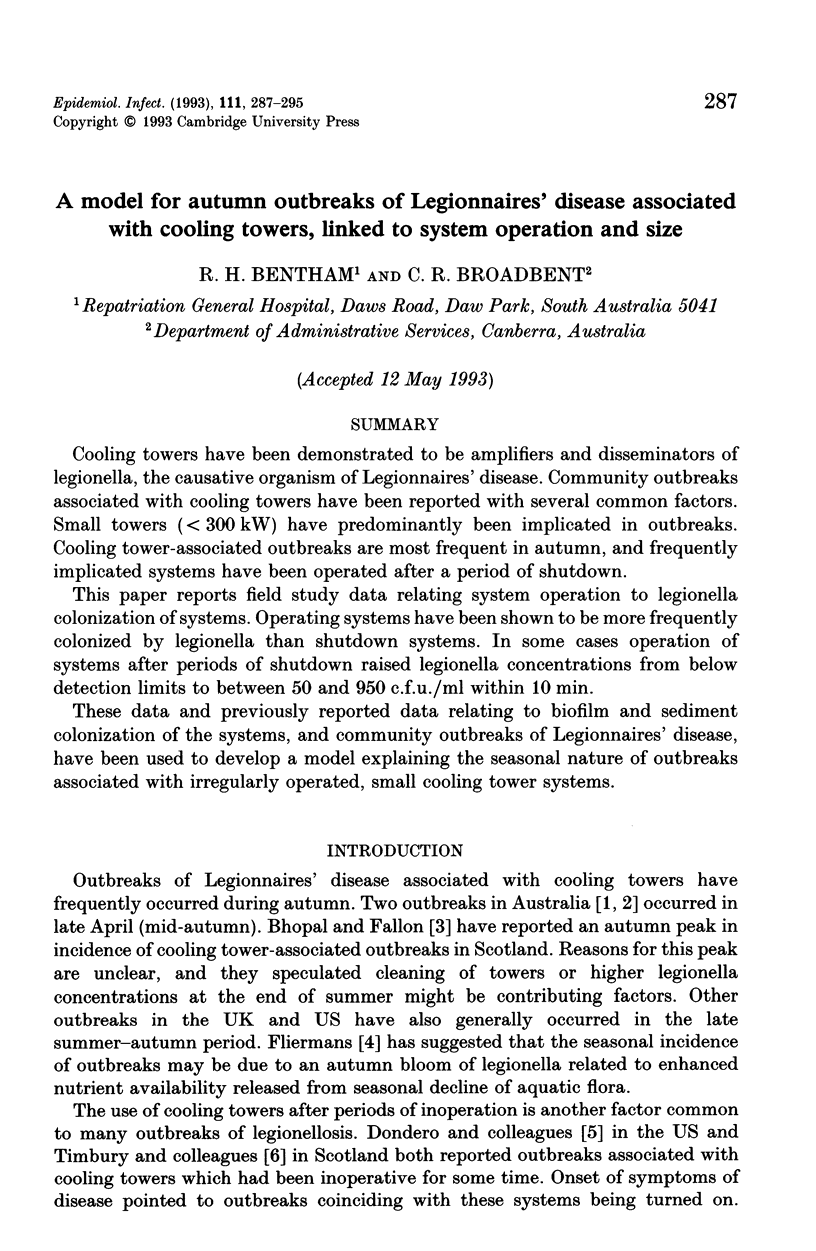
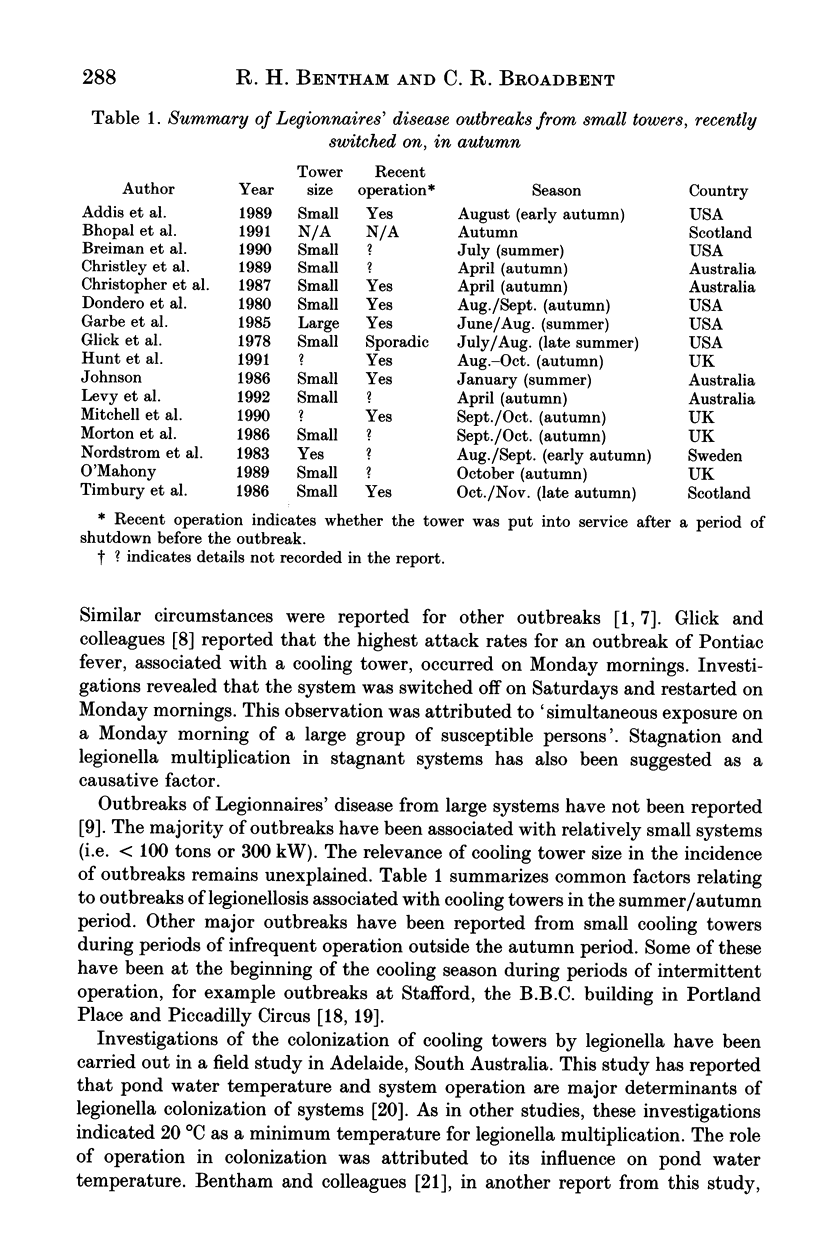
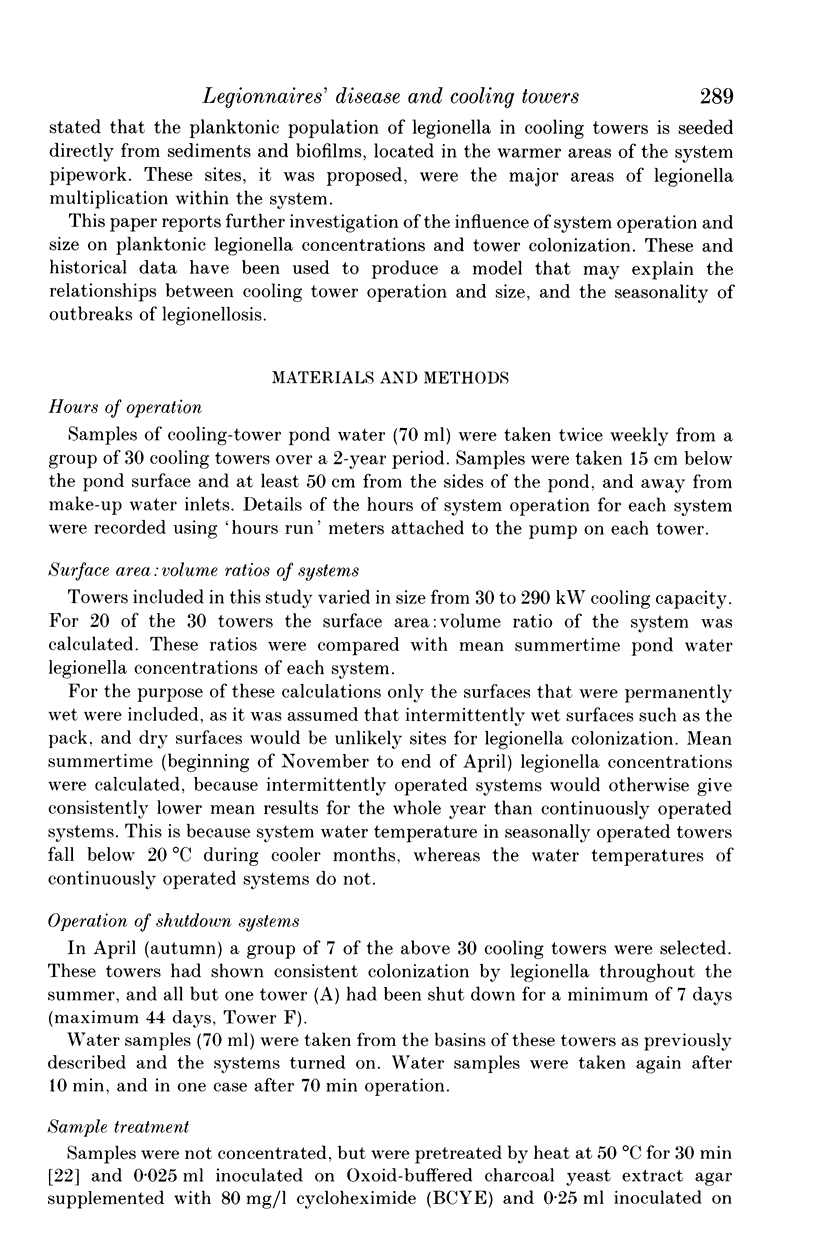
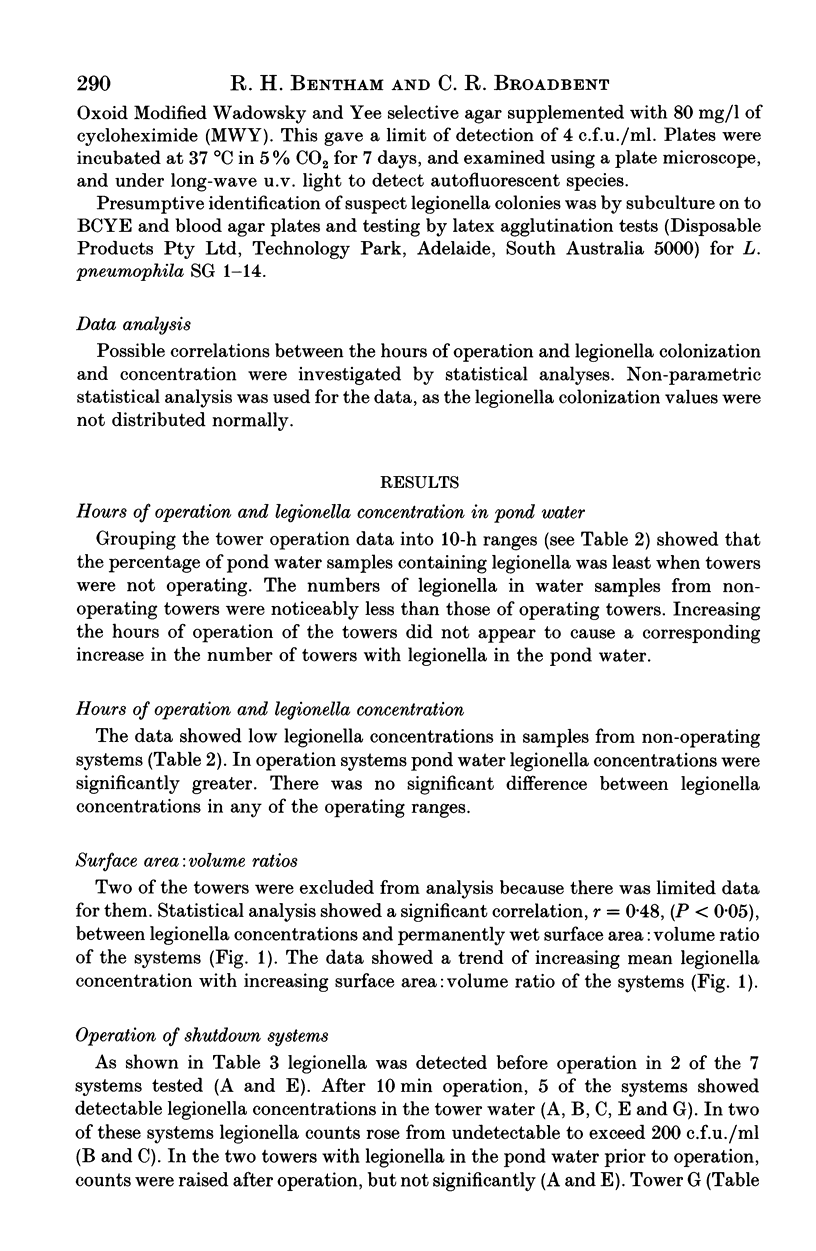
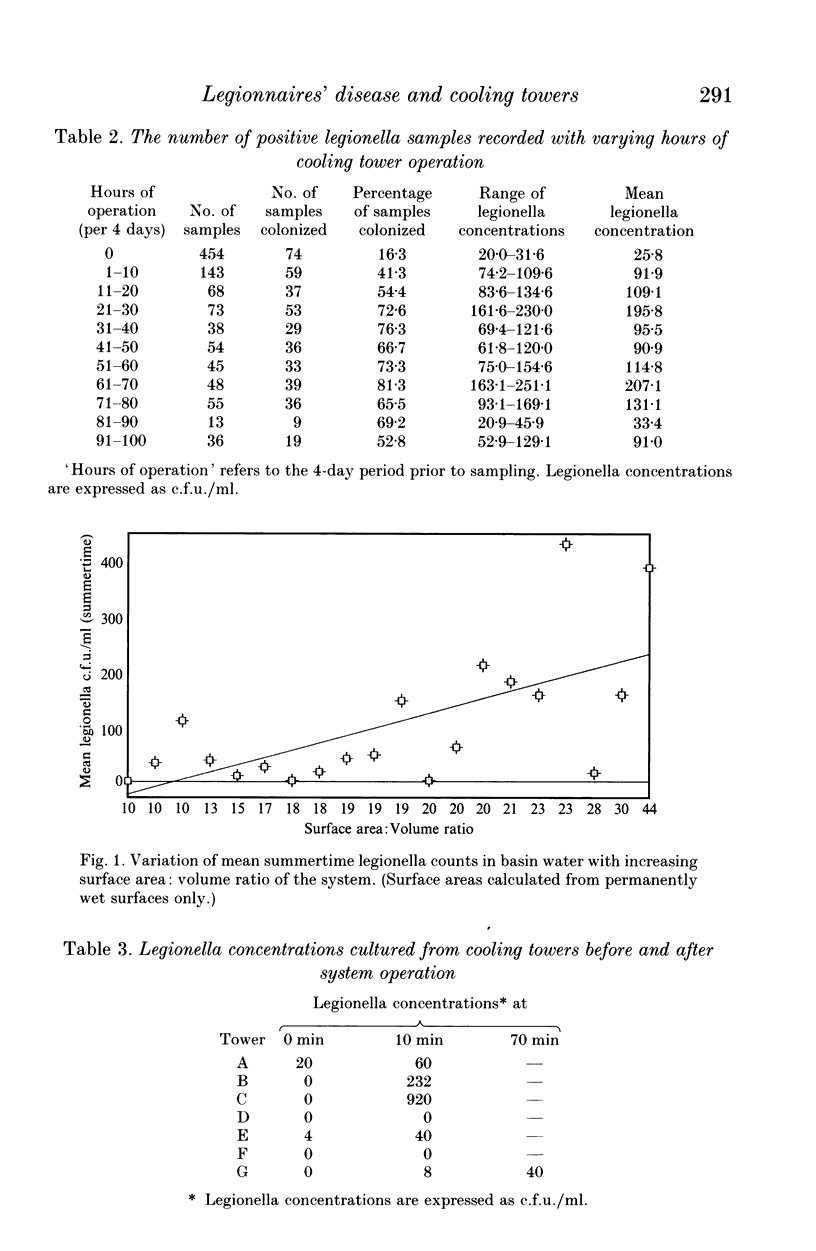
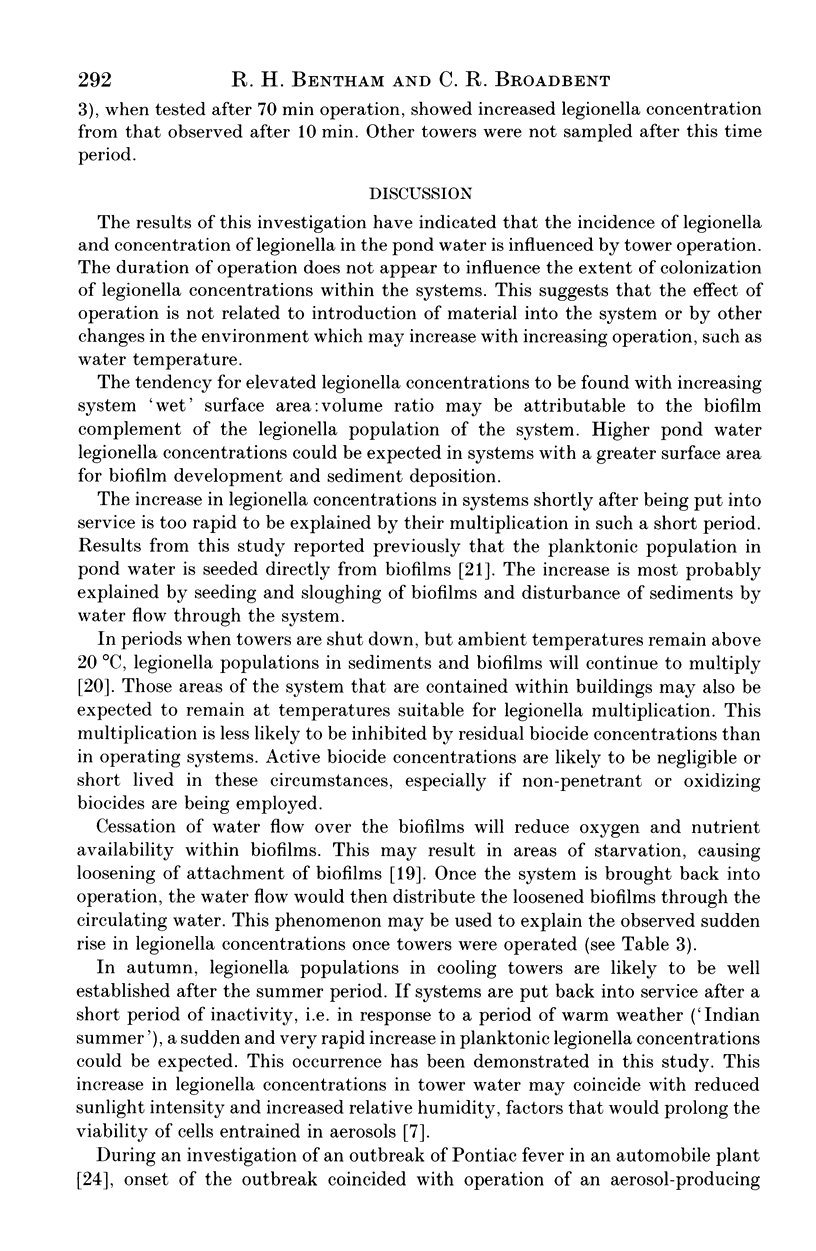
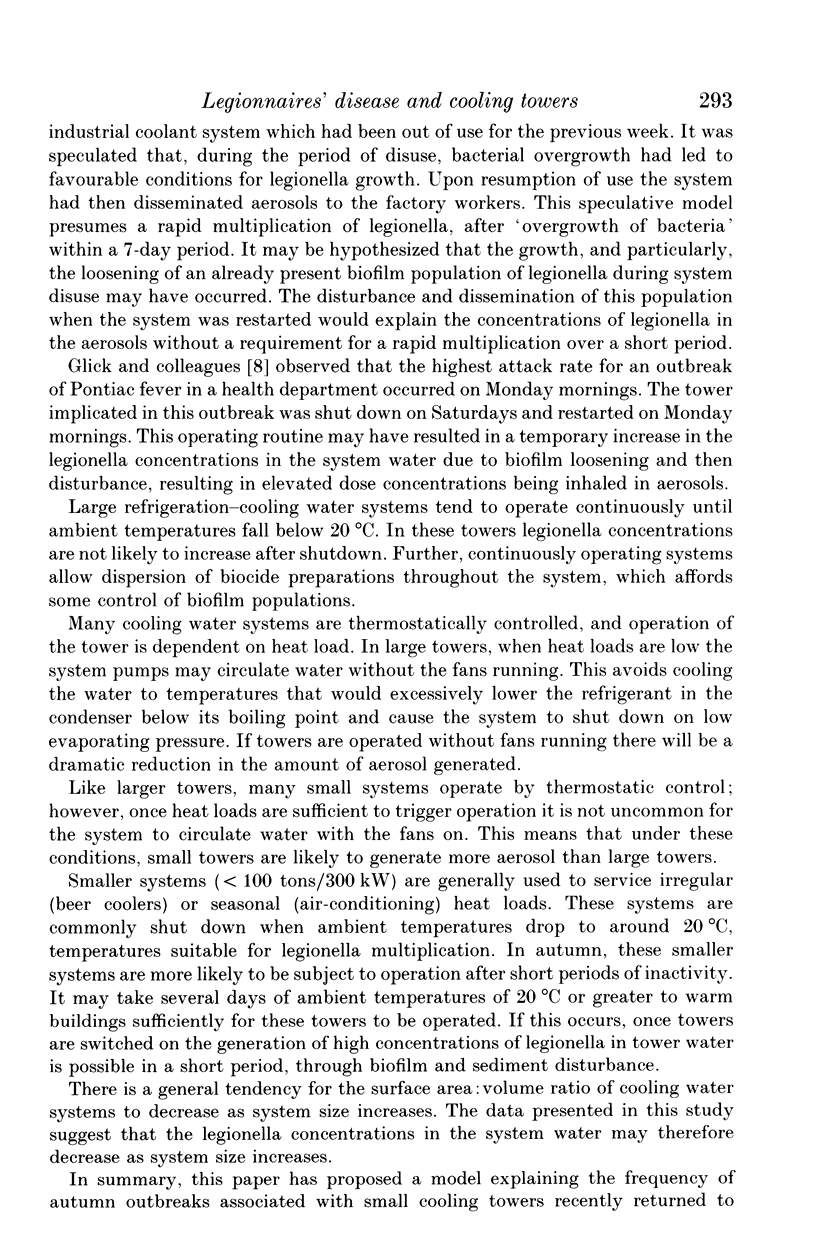
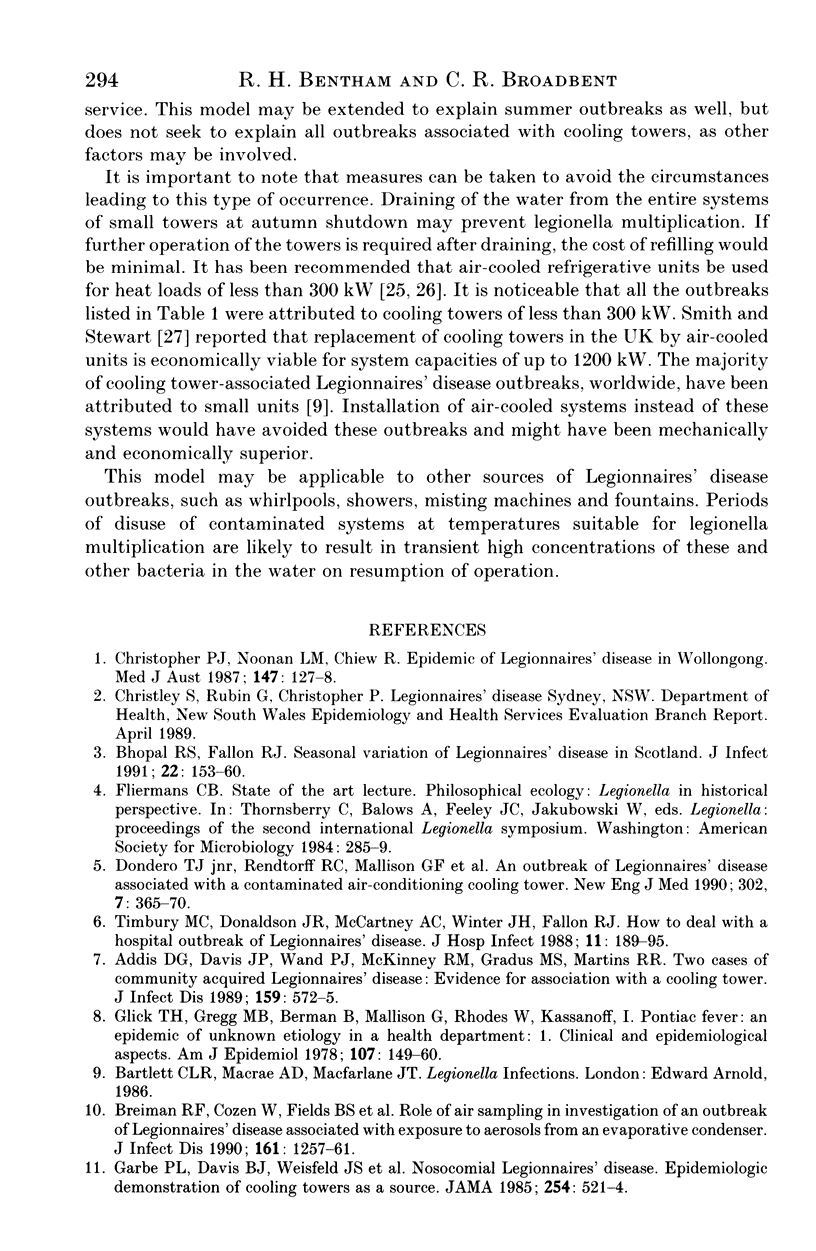
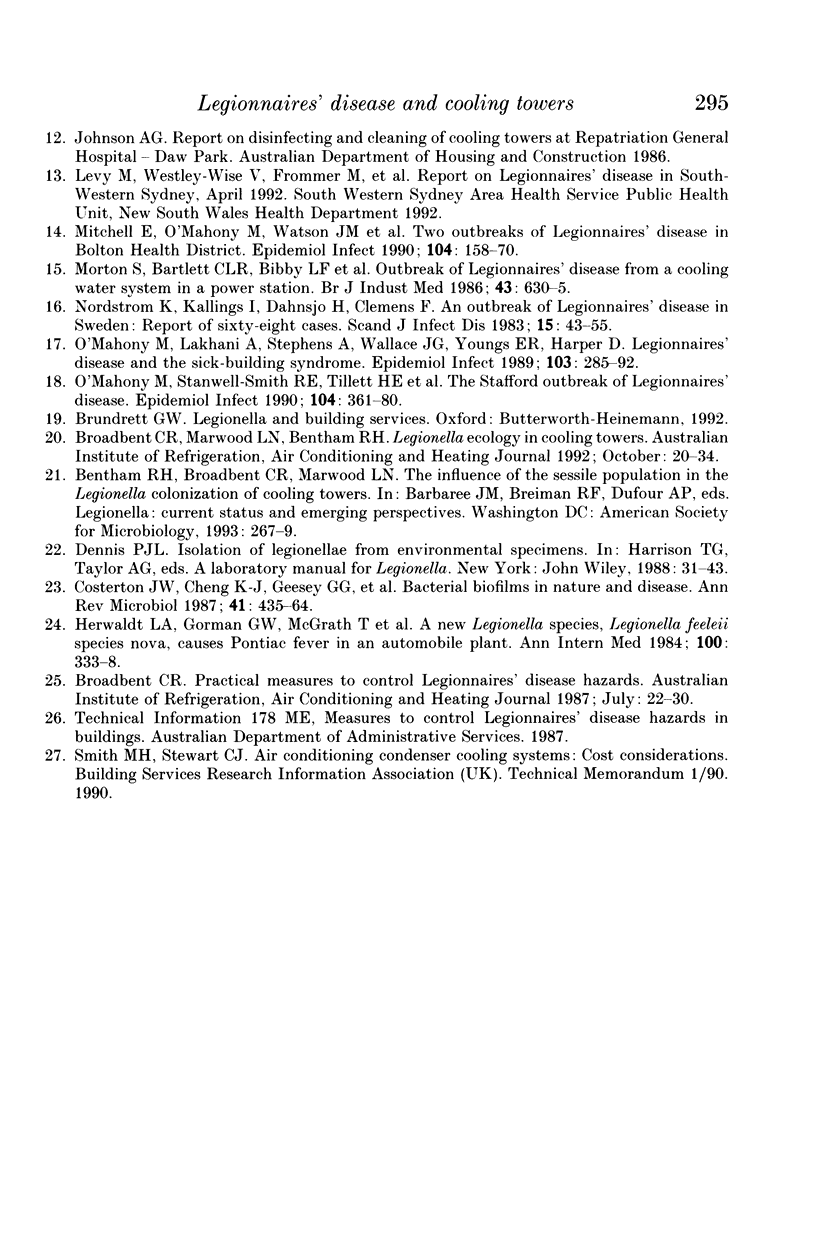
Selected References
These references are in PubMed. This may not be the complete list of references from this article.
- Addiss D. G., Davis J. P., Wand P. J., McKinney R. M., Gradus M. S., Martins R. R. Two cases of community-acquired Legionnaires' disease: evidence for association with a cooling tower. J Infect Dis. 1989 Mar;159(3):572–575. doi: 10.1093/infdis/159.3.572. [DOI] [PubMed] [Google Scholar]
- Bhopal R. S., Fallon R. J. Seasonal variation of Legionnaires' disease in Scotland. J Infect. 1991 Mar;22(2):153–160. doi: 10.1016/0163-4453(91)91569-j. [DOI] [PubMed] [Google Scholar]
- Breiman R. F., Cozen W., Fields B. S., Mastro T. D., Carr S. J., Spika J. S., Mascola L. Role of air sampling in investigation of an outbreak of legionnaires' disease associated with exposure to aerosols from an evaporative condenser. J Infect Dis. 1990 Jun;161(6):1257–1261. doi: 10.1093/infdis/161.6.1257. [DOI] [PubMed] [Google Scholar]
- Christopher P. J., Noonan L. M., Chiew R. Epidemic of Legionnaires' disease in Wollongong. Med J Aust. 1987 Aug 3;147(3):127–128. [PubMed] [Google Scholar]
- Costerton J. W., Cheng K. J., Geesey G. G., Ladd T. I., Nickel J. C., Dasgupta M., Marrie T. J. Bacterial biofilms in nature and disease. Annu Rev Microbiol. 1987;41:435–464. doi: 10.1146/annurev.mi.41.100187.002251. [DOI] [PubMed] [Google Scholar]
- Dondero T. J., Jr, Rendtorff R. C., Mallison G. F., Weeks R. M., Levy J. S., Wong E. W., Schaffner W. An outbreak of Legionnaires' disease associated with a contaminated air-conditioning cooling tower. N Engl J Med. 1980 Feb 14;302(7):365–370. doi: 10.1056/NEJM198002143020703. [DOI] [PubMed] [Google Scholar]
- Garbe P. L., Davis B. J., Weisfeld J. S., Markowitz L., Miner P., Garrity F., Barbaree J. M., Reingold A. L. Nosocomial Legionnaires' disease. Epidemiologic demonstration of cooling towers as a source. JAMA. 1985 Jul 26;254(4):521–524. doi: 10.1001/jama.254.4.521. [DOI] [PubMed] [Google Scholar]
- Glick T. H., Gregg M. B., Berman B., Mallison G., Rhodes W. W., Jr, Kassanoff I. Pontiac fever. An epidemic of unknown etiology in a health department: I. Clinical and epidemiologic aspects. Am J Epidemiol. 1978 Feb;107(2):149–160. doi: 10.1093/oxfordjournals.aje.a112517. [DOI] [PubMed] [Google Scholar]
- Herwaldt L. A., Gorman G. W., McGrath T., Toma S., Brake B., Hightower A. W., Jones J., Reingold A. L., Boxer P. A., Tang P. W. A new Legionella species, Legionella feeleii species nova, causes Pontiac fever in an automobile plant. Ann Intern Med. 1984 Mar;100(3):333–338. doi: 10.7326/0003-4819-100-3-333. [DOI] [PubMed] [Google Scholar]
- Morton S., Bartlett C. L., Bibby L. F., Hutchinson D. N., Dyer J. V., Dennis P. J. Outbreak of legionnaires' disease from a cooling water system in a power station. Br J Ind Med. 1986 Sep;43(9):630–635. doi: 10.1136/oem.43.9.630. [DOI] [PMC free article] [PubMed] [Google Scholar]
- Nordström K., Kallings I., Dahnsjö H., Clemens F. An outbreak of Legionnaires' disease in Sweden: report of sixty-eight cases. Scand J Infect Dis. 1983;15(1):43–55. doi: 10.3109/inf.1983.15.issue-1.08. [DOI] [PubMed] [Google Scholar]
- O'Mahony M. C., Stanwell-Smith R. E., Tillett H. E., Harper D., Hutchison J. G., Farrell I. D., Hutchinson D. N., Lee J. V., Dennis P. J., Duggal H. V. The Stafford outbreak of Legionnaires' disease. Epidemiol Infect. 1990 Jun;104(3):361–380. doi: 10.1017/s0950268800047385. [DOI] [PMC free article] [PubMed] [Google Scholar]
- O'Mahony M., Lakhani A., Stephens A., Wallace J. G., Youngs E. R., Harper D. Legionnaires' disease and the sick-building syndrome. Epidemiol Infect. 1989 Oct;103(2):285–292. doi: 10.1017/s0950268800030648. [DOI] [PMC free article] [PubMed] [Google Scholar]
- Timbury M. C., Donaldson J. R., McCartney A. C., Winter J. H., Fallon R. J. How to deal with a hospital outbreak of Legionnaires' disease. J Hosp Infect. 1988 Feb;11 (Suppl A):189–200. doi: 10.1016/0195-6701(88)90186-7. [DOI] [PubMed] [Google Scholar]


